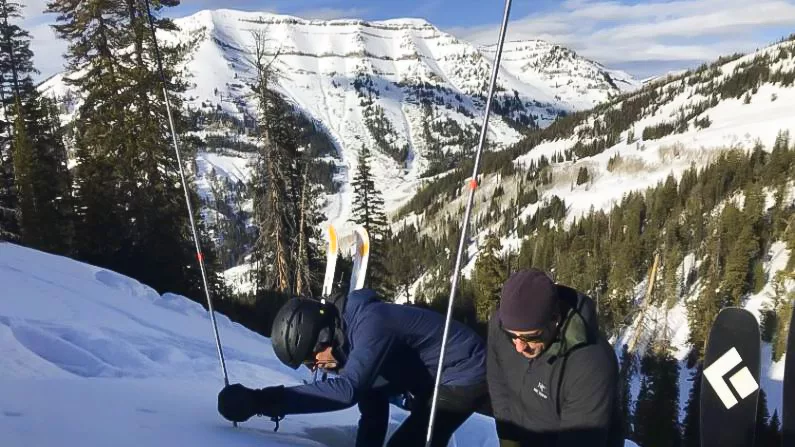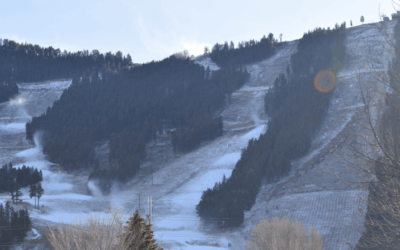High up on a snowy ridge in the Tetons, Frank Carus and John Fitzgerald carved out a flat spot in a steep slope so they can see its layers. They were digging a snow pit to better understand the snow’s stability and are in this specific spot because an avalanche occurred there over a week ago, most likely not human triggered.
“ECTP 23 on 2 mil facets – not great, not the worst,” said Fitzgerald, after using his shovel to do what’s called an extended column test on an isolated column of snow. The test is focused on assessing propagation, or how likely it is for a fracture to spread through a snowpack.
Carus and Fitzgerald work as forecasters with the Jackson-based Bridger-Teton Avalanche Center. It’s part of the forest service and provides daily avalanche forecasts, and snow and weather data for Northwest Wyoming.
“Interesting and consistent to have no failure at that crust, which is what we saw a week ago,” said Fitzgerald, looking at the layers of different snow crystals.
It’s the forecasters’ job to literally get their hands in the snow to test its stability – in many different locations, aspects and elevations – and to see how it’s changed over time.
“We’ve had that sandwich crust, facet crust, down towards the bottom of the pack but not at the ground,” said Fitzgerald, pointing towards a layer of sugary, angular crystals that haven’t strongly bonded with the layers of snow above and below it.
In the world of snow science, crust and facets are typically not good words – they both are often indicators that the snow is less likely to be stable. With this new information, the forecasters now have one more data point for when they provide their professional opinion on the trend of snow stability in this area.
Carus, who is the director of the Bridger-Teton Avalanche Center, said they only have so many forecasters who can get out and gather information on the ground.
“There’s basically six forecasters trying to cover 7,000 square miles of forecast area, and each of our mountain ranges have some unique weather and avalanche conditions,” he said.
That 7,000 square miles covers the south end of Yellowstone National Park all the way down to Cokeville and Hamsfork, and from the eastern edge of Idaho to Dubois. The center creates three separate forecasts for the area around Togwotee Pass, the Tetons, and the Greys River zone, which includes the Wyoming, Salt and Snake River Mountain ranges.
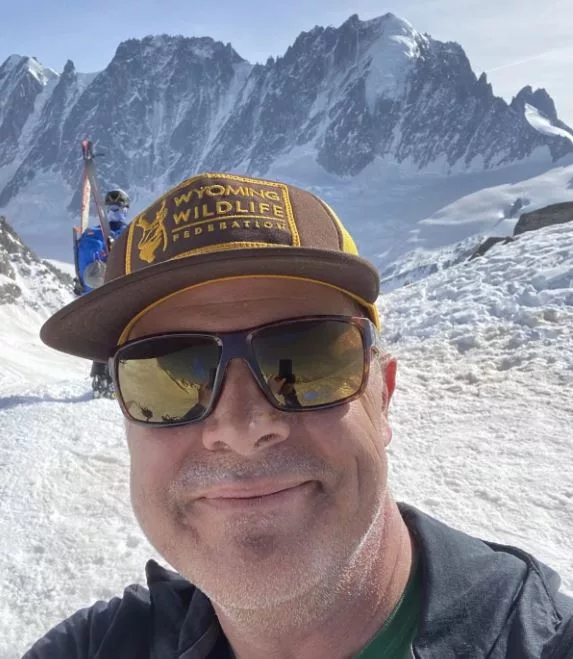
Bridger-Teton Avalanche Center Foundation Executive Director Dwayne Meadows. (Bridger-Teton Avalanche Center Foundation)
However, there’s currently no other professional avalanche forecasting organization for any other part of the state.
“There are a lot of blank spaces on the map that are where people are riding and snowmobiling without an avalanche forecast to say, ‘Hey, today, the avalanche danger is high or low or considerable or extreme,’” said Dwayne Meadows.
Meadows is the executive director of the Bridger-Teton Avalanche Center Foundation, which raises about 70 percent of the funding for the center through private donations and grants.
Eastern Wyoming is one of those blank spaces. But, this year, the center received a grant from the Wyoming State Trails Program to create a new Avalanche Information Exchange page for the area on their website.
The page is a centralized place for the public to share and see other community snow-focused observations for the Big Horn, Sierra Madre and Snowy Mountain ranges. There, people can post things like a photo of a recent avalanche or a crusty layer in a snow pit, and can also view webcams and weather station data.
“Before they go out, they can make decisions on what the snowpack may be like – it’ll help guide their terrain choices, hopefully,” Carus said.
A lot of the people getting out in those mountain ranges in the eastern part of the state, throughout Wyoming, and on the Wyoming-Idaho border are snowmobilers.
“Snowmobiling is arguably the biggest part of Wyoming’s winter tourism economy, bigger than skiing, and I think it provides a lot for a lot of tiny little towns all over the state,” said Meadows, who grew up snowmobiling around Saratoga.

A screenshot from the Bridger-Teton Avalanche Center homepage, which shows the area where the organization currently forecasts in yellow. The shaded gray areas outlined in blue are the focus of the new Eastern Wyoming Avalanche Information Exchange page. (Bridger-Teton Avalanche Center)
According to a report on snowmobile recreation in the state published in 2022, the number of people visiting Wyoming to ride has increased by almost 40 percent in a nine-year time period. The report also found that snowmobiling generated $193.8 million directly to the Wyoming economy in 2020-2021, and a total of $255 million with secondary activities like job creation. It also stated that the average household in Wyoming owns three snowmobiles and the average rider in the state snowmobiles 21 days per year.
In 2019, snowmobile avalanche fatalities exceeded skiing avalanche fatalities in the state. Meadows said snowmobiler deaths in avalanches have increased over the years, while skiing deaths have plateaued despite increased use in both types of recreation.
Meadows also said the sport of snowmobiling has changed significantly in his lifetime – and that advances in technology have made it so that less-experienced riders can access more dangerous, remote terrain.
“The snowmobiles are a lot easier to ride – they’re lighter and they’re faster and people are getting themselves in trouble,” he said.
Meadows said high-action sports movies and social media have also influenced the types of objectives and experiences riders are looking for.
“Snowmobiling was just basically going for a ride in the woods and stopping at your local tavern and having a beer and a burger and then going home. Now, it’s right up there with motocross and dirt-biking,” he said.
According to the Bridger-Teton Avalanche Center’s state fatalities database, three of the four of the deaths in the Snowy Mountains since the 1980s were snowmobilers. And the trend goes beyond Wyoming’s borders – from 2010 to 2022, 11 people died in avalanches in Eastern Idaho, and the majority were snowmobilers or snow bikers.
Heather Tupper is a volunteer with the Snowy Range Snowmobile Club, which has been around for about 30 years and has roughly 60 members. The club takes care of shelters throughout the area and helps educate users about winter recreation guidelines and tools for staying safe.
Tupper said this focus on education is especially important, given that the “Snowies” are the first big mountain range you run into coming west on I-80 – and that the sport has only continued to grow in popularity.
“Every year, there’s always people that have never been here. Even the elevation can be something that people just don’t realize, so we just try to help make connections for people to be smart and to be safe,” she said.
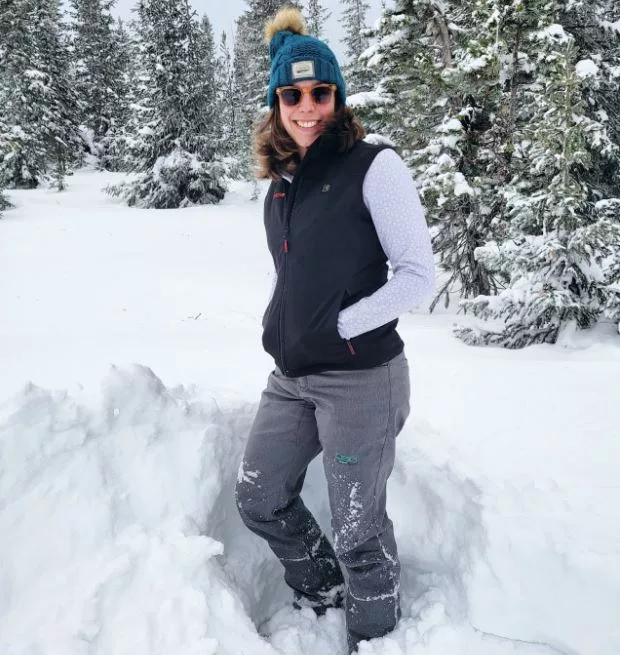
Snowy Range Snowmobile Club volunteer Heather Tupper. (Heather Tupper)
Tupper’s dad grew up snowmobiling in the Snowy Range, and her and her husband are also no strangers to the area’s trails and mountains. She echoed the sentiment that changes in snowmobiling technology and tools like mapping apps have made it easier for more people to get into more consequential terrain.
“You can go anywhere, in theory, but that doesn’t mean that you should,” she said.
Tupper said those changes have resulted in a need for more avalanche education in her corner of Wyoming.
“We don’t have a lot of areas that are avalanche prone, but there are spots that are. We try to work with educators to get classes and to get people in touch with the fact that we have avalanche beacon check stations at the trailheads,” she said.
Tupper said the new Eastern Wyoming Avalanche Information Exchange page can be another useful tool for people to use as they’re planning their trips out into the backcountry. She said continuing to educate people on how to make observations and just getting the page on people’s radar will be helpful.
“We as a user group can help support this and continue to build legitimacy behind the need for this information and a place to find it,” she said.
Will Mook is the executive director of the organization Advocates for Multi-Use of Public Lands and is also the co-founder of the Mountain Riding Lab, which teaches motorized avalanche education in Wyoming and Idaho.
Mook said the field of motorized avalanche education is relatively new and that the sport-specific curriculum is an important step for helping prepare people to make good decisions in the mountains.
“We travel miles and miles, so we need to be able to evaluate terrain quickly on the fly. And we need to keep ourselves and our groups in check and make sure we’re stopping and talking about that terrain before we’re in anything that we might be exposed to an avalanche hazard,” he said.
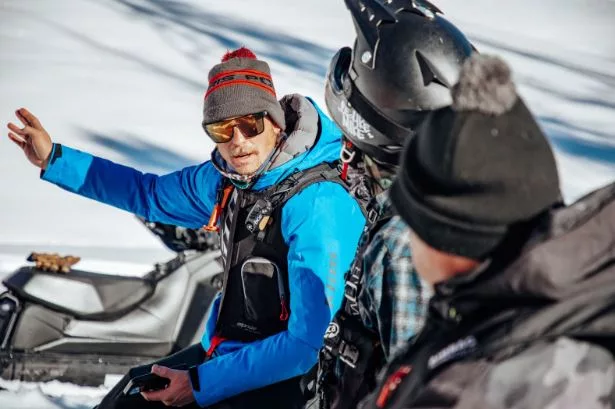
Motorized avalanche education instructor Will Mook. (Ben Dann)
Mook said opportunities for motorized avalanche education are just starting to catch up to snowmobiling technology – and that the new Eastern Wyoming Avalanche Information Exchange page has the potential to be a helpful resource for the motorized community if recreators lean in.
“The way it’s going to work is if we get user buy-in and if people really contribute and submit observations,” he said.
Mook said that an increase in educational avalanche-awareness classes and more on-the-ground data points will ideally keep more people safe in the backcountry.
“Hopefully, that’s going to turn the bar graphs around and we’re not going to be the user group that has the most fatalities across the West every year,” he said.
The Bridger-Teton Avalanche Center is currently reaching out to clubs and organizations in the eastern half of the state to see if they can help spread the word about the new page. The organization also plans to teach snow-safety classes out in the eastern half of the state this winter.

